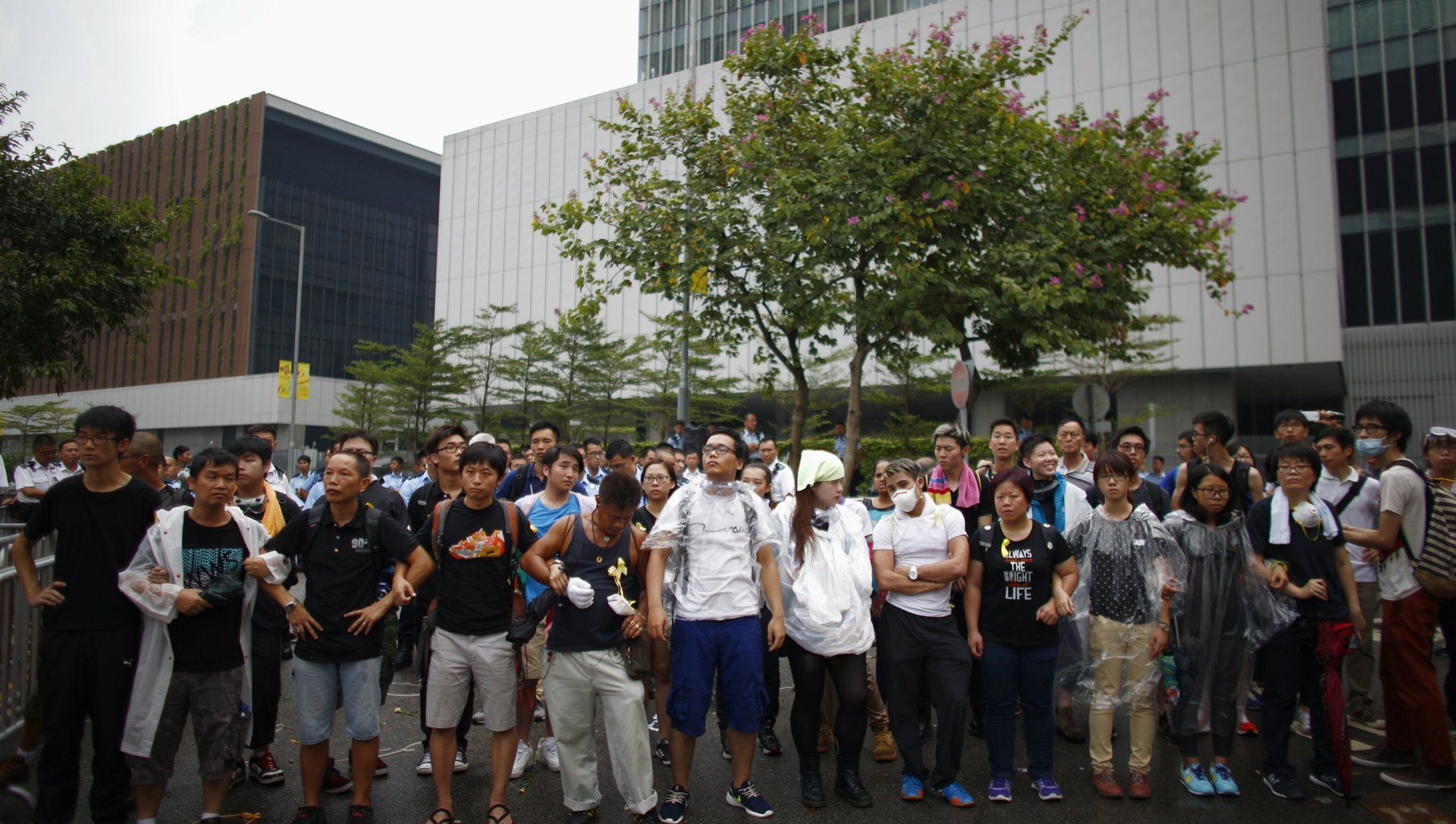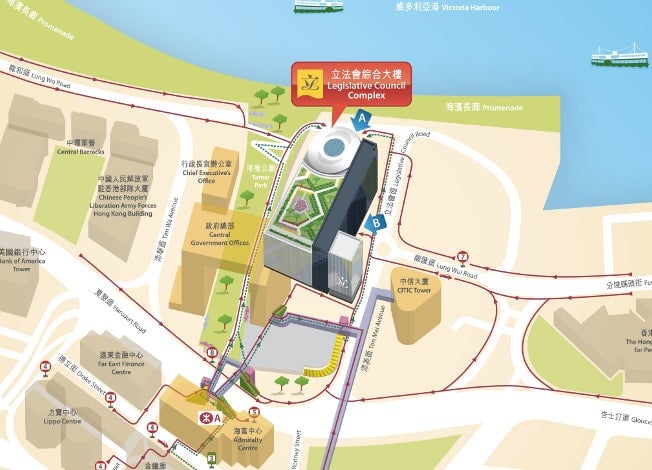How Hong Kong’s umbrella revolutionaries shut down the government, at least temporarily
After a two-day holiday to celebrate the formation of the People’s Republic of China, today was supposed to be back-to-work time for many of Hong Kong’s civil servants. But protesters unhappy with last night’s message from chief executive CY Leung barricaded the government’s offices entirely this morning, forcing the city to declare another day off.


After a two-day holiday to celebrate the formation of the People’s Republic of China, today was supposed to be back-to-work time for many of Hong Kong’s civil servants. But protesters unhappy with last night’s message from chief executive CY Leung barricaded the government’s offices entirely this morning, forcing the city to declare another day off.
The government’s decision to close its offices delays a potentially violent conflict with the demonstrators, and buys it time ahead of what is expected to be a hot and rainy weekend that may erode protest crowds.
Protesters completely blocked the entrances to Hong Kong’s government building complex, which includes the chief executives’ office, central government offices and the legislative council complex.

They used a combination of metal barricades and manpower several entrances. Here’s the pile of barricades held together with plastic-ties at one entrance to the Central Government Office:
“We’re going to protest until the government takes responsibility, until the chief executive resigns, and until we really have universal suffrage,” said a protester named Lucas, 24, who was stationed outside, wearing a raincoat and a mask.
A crowd surged around another other entrance to the central building, which was also barricaded with a pile of metal and plastic fence, faced off against a line of police with riot shields. Another crowd linked hands outside the entrance to the chief executive’s office (the picture on top).
As government employees started to get to work at 8am, protesters stopped them from entering the central government building, and also prevented police from removing the barricades. Groups of middle-aged men and women in business-casual outfits waited to get into the building stood far back from the black t-shirted protesters, some grimacing with frustration.
After several small but tense scuffles it became clear that the protesters wouldn’t budge. A government representative came out with a megaphone and announced that all public servants have the day off. Then the workers that had already entered the building were let out single-file:
The blockade of the government building—which had been accessible during most of the protests, even as the main thoroughfare outside the complex was closed to vehicle traffic—clearly angered some of the workers. “Why do you have the right to protest and I don’t have the right to go to work?” one grey-haired woman who said she was a cleaner screamed at the protesters outside.
Hong Kong’s civil service employs over 162,000 people, but that includes everyone from public utility workers to police. These government offices house the city’s main administrative and political offices, including the health, labor, budget and education departments, which include thousands of people.
Protesters say they aren’t impressed by the government’s promise last night to send an emissary to speak to them, a promise that came without any set time or date. “At this moment, there’s been no news about meetings,” said Emily, a 25 year old protester who works in logistics. “We hope the government comes out to talk to us, but I don’t think they’ll keep their promise, because we all know the Communist Party.”